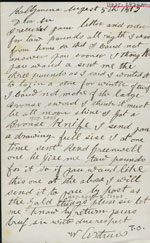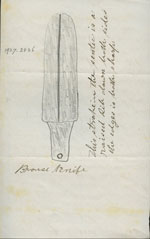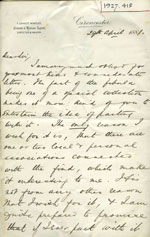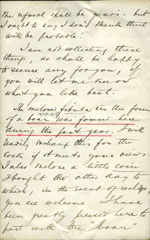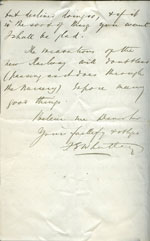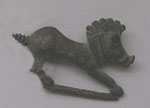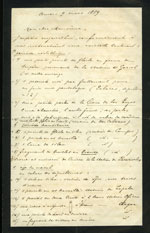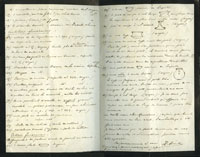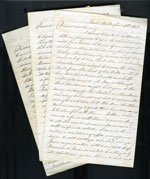Correspondence
Evans corresponded with many people in the course of his career. Just a few examples are to be found below. Evans's correspondence reveals that his correspondents mastered many skills, including vivid interpretations of the significance of finds (such as in the drawing below) as well as refined tactics in artefact collecting. This can be seen in a letter from Canon William Greenwell (1820-1918) to Evans dated 26 November 1867 (Archive Ref: JE/B/1/6):
Another letter warns Evans, in Danish - a language he mastered - that some Danish items (from Anholt) at the Paris exhibition are badly researched. There were at least 330 items on display in 1867, according to a list in Copenhagen (National Museum archive). |
|||||||
Click for larger images 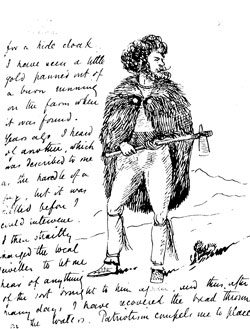 Letter to John Evans from Herbert Maxwell (Bt, M.P. F.S.A.Scot) of Whamphill, Wigtownshire dated 1894 |
The correspondence also reveals artistic merits being deployed at a high level in the interpretation of finds; for instance in the case of a large cloak fastener seen in a letter from Evans to Herbert Maxwell (Archive Ref: JE-B-2-60). |
||||||
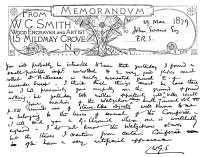 Worthington Smith's letter head |
In the case of Worthington G. Smith, who by profession was a wood engraver, both letterheads and illustrations are of very high quality.
|
||||||
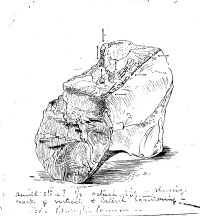 Sketch by Worthington Smith in letter to John Evans |
High-quality drawings can be seen in numerous letters such as one discussing flint knapping techniques from the evidence of an implement, which also includes small arrows showing the direction of strikes. |
||||||
|
|||||||
F. Ernest Whatley of Cirencester was another correspondent. In his letter of 29 April 1881 he asks Evans to exchange his brooch in the form of a boar for another depicting a cockerel, which he had wanted to purchase but which Evans had managed to acquire it instead. The letter is below. Beside the letter is the actual brooch in the collections. Click on the pictures to see larger versions.
|
|||||||
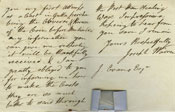 letter from Warren to Evans (1858) |
Joseph Warren from Ixworth, Suffolk was another prolific correspondent and source of objects. In this letter on the left, Warren tells Evans 'I have met little in the way of antiquities since I last wrote to you till a fortnight ago when a small gold coin, 19 grams, one of the Merovingian ones I think, found near Wells on the Norfolk coast, came my way'. Warren then goes on to thank Evans for his suggestion that he should make casts in gutta percha instead of sealing wax, as it survived better when posted. Follow the link to see more about Joseph Warren and click on the picture on the right to see a larger version. |
||||||
|
|||||||
|
As well as correspondence from friends, collectors and dealers etc there is a quantity of family papers, including letters between John Evans and his wives. The three letters on the left, written from Nash Mills in 1858, are to Fanny, Evans's second wife. He starts 'Dearest Fanny' on two of them and 'Dearest Old Fanny' on the third. Fanny was 32 at the time and the letters were written a year before they married. Click on the picture to see a larger version. | ||||||
| (Note: eventually this website will have a complete list of correspondents with any biographical details that if available. Any help with the identifications of corespondents would be appreciated. Contact: webmaster@ashmus.ox.ac.uk) Although very extensive the archive is by no means complete. For example there are many letters from Evans in the Lyell archive in Edinburgh University Library, but the Ashmolean does not have the corresponding letters from Lyell to Evans. There are also letters to Evans in several American libraries. |
|||||||
Further References / Links:Still under construction. |
|||||||

